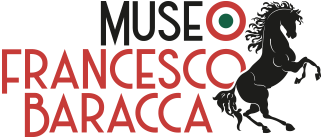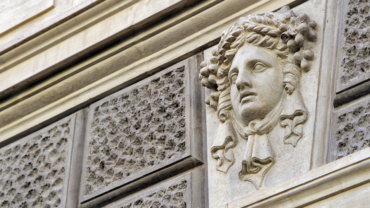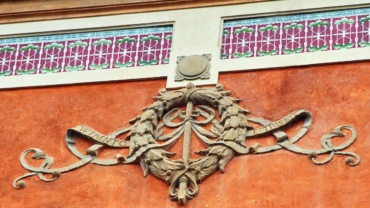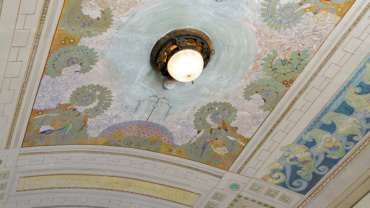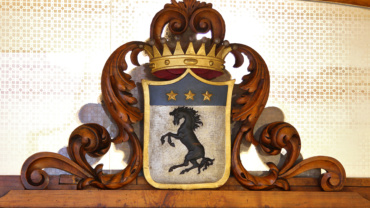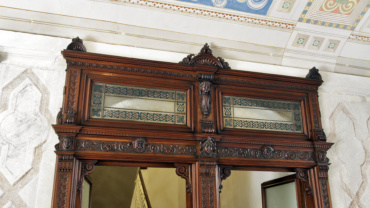Casa Baracca
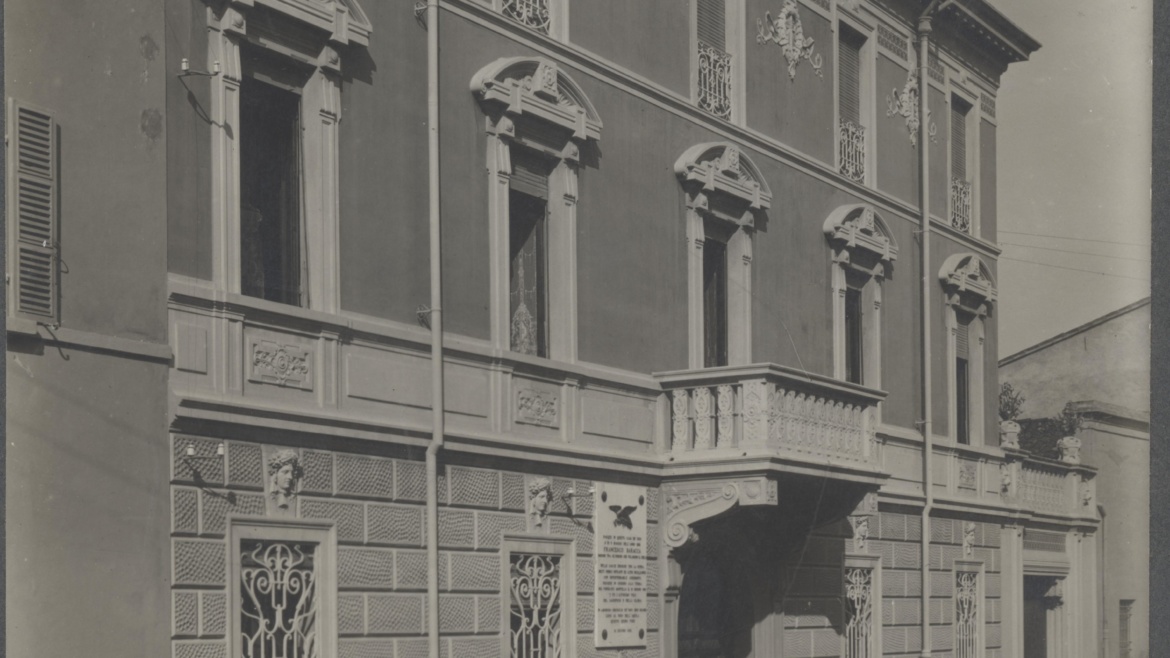
According to the Register of Births of the Municipality of Lugo, Francesco Baracca was born at no. 306 Via del Corso, today’s Via Garibaldi, on the 9th of May 1888, in the elegant small palace now known as Palazzo Tamba; anyway some sources refer to the nearby locality of San Potito, favourite summer residence among the family’s numerous rural estates.
In 1894, after the marriage of his paternal uncle Angelo, the household composed by Enrico, Paolina and Francesco moved to the new building erected on parallel Via Fermini, sharing with the original building an internal courtyard with service rooms and horse stables.
Restored in 1916, the building presents a façade characterised by elements of the early 20th century eclecticism and floral style. The ground floor, with its faux ashlar surface, serves as a basement and features an arched central entrance door and four rectangular windows with Art Nouveau grilles. On the piano nobile, the balcony above the entrance door rests on scrolled stone corbels and has a balustrade made of stone elements. The window displays feature a curved tympanum and geometric decorations. On the top floor, decorative elements abound, wreaths with festoons bearing the inscription ‘W Trento e Trieste’, as well as garlands in low relief between the rectangular French windows with Art Nouveau iron balustrades. A band of glazed ceramic tiles introduces the corbelled cornice. The façade is flanked, on the right, by a portion of the building with a large rectangular driveway door surmounted by a balustrade composed of the same stone elements as the central balcony.
Inside the small palace are preserved some stained glass windows and elegant wooden furnishings of the period, realized by sculptor and carver Antonio Turri (Lugo 1872 – 1932), also author of the entrance door to the House and of the original furnishings of the Museum’s first location, today’s Sala Baracca in the Rocca Estense. From Lugo was also Domenico Pasi (Lugo 1892 – 1923), decorator and painter, who realized the frescoes and pastels that decorate the main ceilings of the House. On the occasion of a visit by Crown Prince Umberto di Savoia in June 1926, a marble plaque was placed on the front of the building in memory of the Ace and his birth House.
In 1951, two years after the death of his mother Paolina, the building and its content became property of the Municipality of Lugo, thus fulfilling the testamentary wishes of her husband Enrico, who died in 1936.
In spite of the wish, expressed in the testamentary will, for the House to be intended as a museum, the small palace first hosted, in the 1960s and 1970s, the ‘Francesco Baracca’ and ‘Silvestro Gherardi’ secondary schools, then a number of associations and the Museum of the Resistance.
Since 1993 it is the seat of the Museum dedicated to the Hero.
Podcast
Founded by the Municipality of Lugo in 1924 and inaugurated in June 1926, the “Francesco Baracca” Museum was first established in a hall at the entrance of the Rocca Estense. The original core of memorabilia included mainly relics rescued by Baracca itself during the years spent on the war front. Collections were expanded in 1951, when the Baracca family donated further material, both documents and objects, to the Municipality of Lugo. In 1993 the Museum was moved to the Ace’s birth house, thus fulfilling the last will of Baracca’s father, Count Enrico.
After building consolidation works and the enlargement of exhibition rooms in 2014, the Museum re-opened to the public in May 2015 with two brand new sections dedicated to the ALISTO project (“ALI nella STOria”, Wings in history) and to the Baldini Collection, a fund of illustrated postcards dating back to the Great War.


